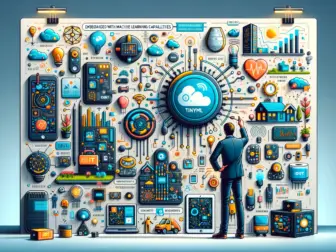Tag - Tiny Machine Learning
Blog , February 26, 2024 , Edge AI, Edge Computing, internet of things, iot, IoT Applications, Machine Learning, Smart Devices, Tiny Machine Learning, TinyML, Ultra-Low Power ML
Exploring the Vast Potential of Tiny Machine Learning (TinyML) in the Era of IoT
Exploring the Vast Potential of Tiny Machine Learning (TinyML) in the Era of IoT
In recent years, the field of machine learning has experienced unprecedented growth, revolutionizing industries and enabling advances in technology that were once thought impossible. However, the benefits of machine learning have often been tethered to powerful, energy-intensive hardware. This reality is rapidly changing with the advent of Tiny Machine Learning (TinyML), an innovative area of technology that brings the transformative power of machine learning to the smallest of devices.
TinyML refers to the deployment of machine learning models on microcontroller-based devices that are typically low-power and have limited computational resources. These devices are often embedded within Internet of Things (IoT) gadgets such as wearables, sensors, and other smart appliances. Despite their size, these tiny machines can perform on-device analytics, process data in real-time, and make autonomous decisions without the need for constant connectivity to the cloud or central servers.
One of the most compelling aspects of TinyML is its potential to democratize machine learning. By miniaturizing the technology, developers and manufacturers can integrate intelligent features into everyday objects at a fraction of the cost and energy consumption of traditional machine learning infrastructure. This opens up a plethora of applications, from agricultural sensors that can detect pests and diseases, to smart home devices that optimize energy use, to health monitors that provide real-time feedback on a user’s wellbeing.
Moreover, the privacy and security benefits that come with processing data locally on the device cannot be overstated. With TinyML, sensitive information can be analyzed without ever leaving the device, thus reducing the risk of data breaches and ensuring user privacy. This is particularly important in an age where data security is a paramount concern for individuals and organizations alike.
Energy efficiency is another hallmark of TinyML. By running complex algorithms on low-power devices, the technology aligns with the growing need for sustainable solutions in the tech industry. This is crucial for battery-operated devices that need to function for extended periods without recharging, as well as for regions with limited access to power sources.
To develop TinyML applications, engineers are optimizing machine learning models to maintain high performance while minimizing resource usage. Techniques such as model quantization, which reduces the precision of the numbers used in computations, and network pruning, which eliminates redundant connections in neural networks, are essential for shrinking models without sacrificing accuracy.
In education and research, TinyML is stirring up excitement as it provides an accessible entry point for students and hobbyists to delve into the world of machine learning. Its low cost and ease of use encourage experimentation and innovation, potentially leading to novel applications that could have a significant impact on society.
Challenges remain, of course. Implementing complex machine learning models on such limited hardware requires ingenuity and a deep understanding of both software optimization and hardware capabilities. There’s also the ongoing need for interdisciplinary collaboration, as TinyML sits at the crossroads of machine learning, embedded systems, and electrical engineering.
In conclusion, Tiny Machine Learning is paving the way for a future where intelligence is embedded into the fabric of everyday life. The convergence of machine learning with ultra-small, energy-efficient devices promises to enhance the functionality of IoT products, contribute to the sustainability of technology, and protect user privacy. As this field matures, we can expect a surge in creative applications that leverage TinyML to make the world smarter, safer, and more connected.
